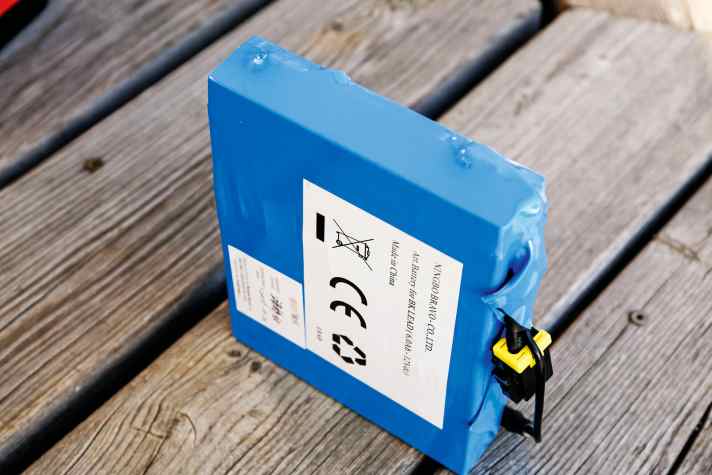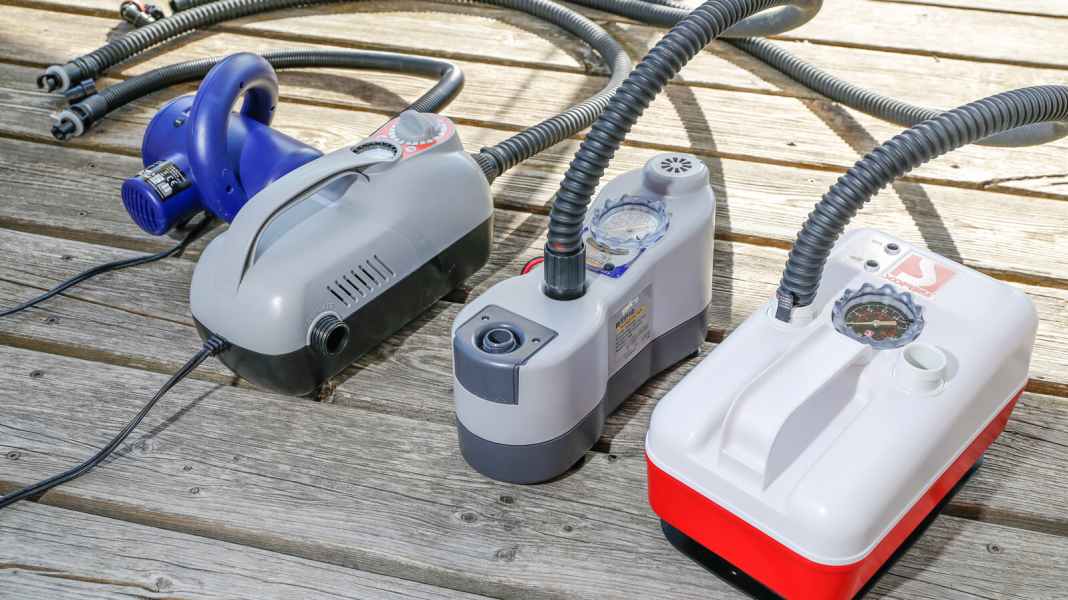
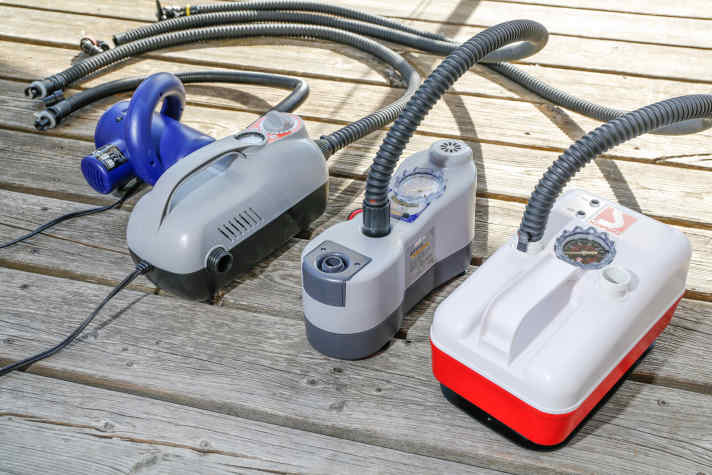
Manual or electric assistance? Battery or cable? And if so, which pump? These are the three questions for which this test can help you decide. The manual pumping time is primarily a measure of fitness and commitment. The reference can therefore only be the personal best time. Electric pumps, on the other hand, know no whims or tired arms and are all fed with the same 12 volts. The pumping times determined in the test may not seem sensationally short, but time is rarely wasted. Slipping into the suit or three to seven passers-by - "Is that inflatable?" - Giving iSUP tuition works perfectly in parallel.
However, the noise should not be underestimated and ten minutes - per board - can be quite long. Pumping up in the car is easy on the sunbathers on the beach and also makes the battery superfluous. These are not as easy to look after as modern mobile phone batteries, and you should take the charging instructions for old-fashioned lead batteries really seriously. Depending on the board size and pressure, one battery charge is enough for two to four boards.
Among the pumps tested are two pure compressor pumps, which initially take a little longer because the small piston in the motor does not create as much volume. There are also two pumps with an additional blower (initially for volume) and the compressor (second stage for high pressure) in a housing with automatic switchover - which, however, do not save any significant time in total The Bravo 20 with its built-in rechargeable battery is quite a big thing and comes in a kind of impressive cooler bag, alternatively a six-pack could also fit in there. Weighing in at a hefty 6000 grams, this might make some iSUPers think twice about pumping themselves and taking coolant with them. Both Bravo pumps are offered by numerous manufacturers, each with their own bags and optionally (in the case of the BTP 12) with or without a battery.
We have tested these electric pumps:
THE TEST RESULTS
Sevylor 12 V 15 psi Pump
Nevertheless, the smallest and lightest pump in the test makes a lot of steam and deserves the price-performance victory. Our standard board (11'6" x 32") was filled with air in 2:30 and after a total of 8:13 to 15 psi, which also corresponds to the maximum pressure of the pump. The pre-setting on the display is impressive. The air hose is very short, but the electric cable is extra long, and the plug fits into the cigarette lighter or the 12-volt socket. But that's actually enough. The hose connection with bayonet lock is not as solid as the screw-on versions, and the small pump is a little wobbly.
Conclusion: Little power dwarf that can do everything.
Weight1.5 kilo
Priceabout 70 Euro >> available here

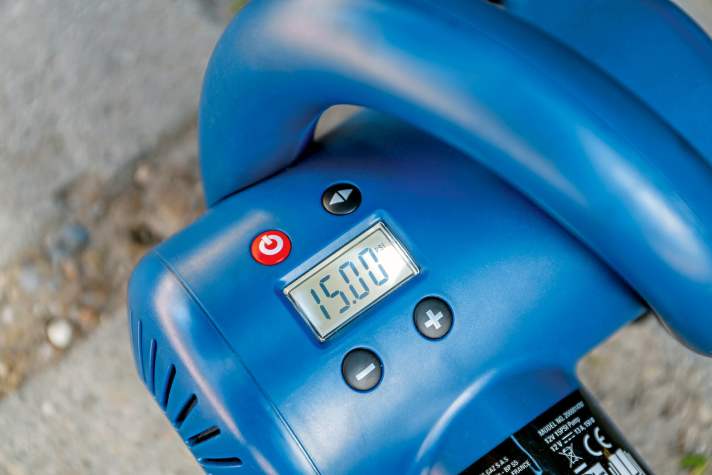
Explorer SUP Pump 12 V
The Explorer uses a combination of blower and compressor. The blower fills the board at 1:14, hissing loudly but at a tolerable frequency. The compressor, which then switches on, also sounds quite rich and solid and does not drop in pitch up to 15 psi. After the best time of 7:25, 15 psi is reached, 20 is the maximum possible, reached in the test after twelve minutes, without audibly running out of breath. The pump also comes with an adapter for optional connection to the 12-volt socket or directly to the car battery.
Weight1.8 kilo
Price: 115 Euro >> available here
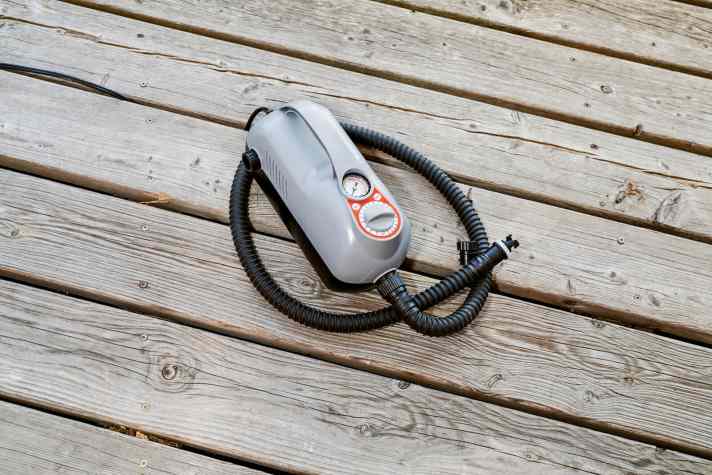

Bravo BTP 12
When the Bravo turbine starts up loudly and the board inflates after just a few seconds, you can't seem to get into your SUP suit or - depending on the weather - your shorts fast enough. After just over a minute, the board is already in shape. When the second stage ignites, the device switches from turbine to compressor mode, however, it takes a comparatively leisurely pace. Looking a little weak, the pump ultimately takes a good ten minutes (10:15) to switch off just below the set maximum 15 psi.
Weight5.6 kilos (incl. bag and battery)
Price: 279,95 Euro >> available here
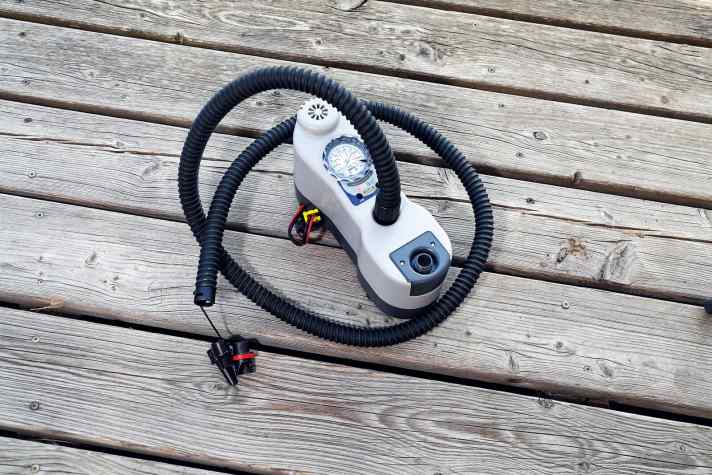

Bravo 20
The Bravo 20 is a pure compressor pump with an integrated rechargeable battery and an option for a 12-volt socket and direct battery connection. As a special feature, it can also be charged via the car power supply while travelling. Even without a blower, but with a solidly growling compressor, it takes 7:35 minutes to reach the required 15 psi on the test board. A further 2:50 minutes are then needed to reach a crisp 20 psi - if desired and if this is permitted and recommended for the board. The connection hose is particularly long and the heavy pump stands securely.
Weight6.0 kilos (incl. bag)
Price240 Euro >> available here

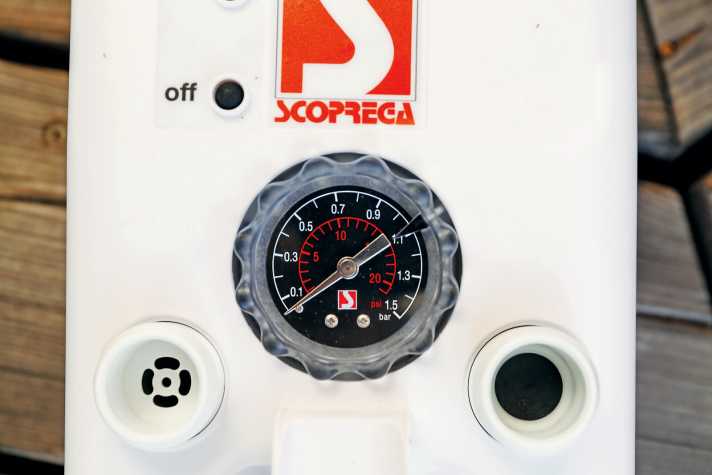
The Bravo pumps are usually offered in matching bags. The BTP 12 (photo 1) was tested as an ION model, the BP 20 (photo 2) is sold as shown by Gun Sails.
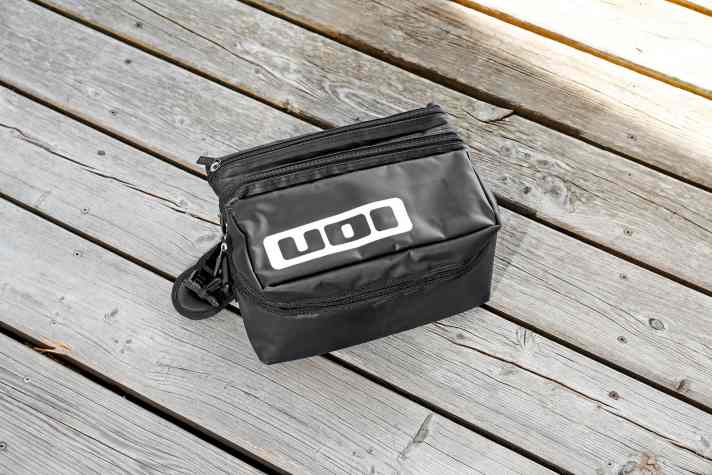
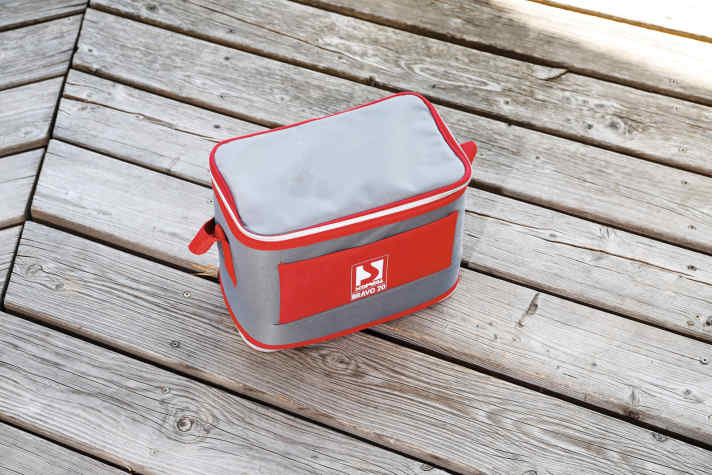
Standard batteries are lead-acid batteries (photo 3), which need to be charged carefully if you want to enjoy them for longer; the warranty is only three months. An adapter (photo 4) is practical for connecting to the battery, as many 12-volt sockets require the ignition to be switched on and thus start unnecessary power consumers.
